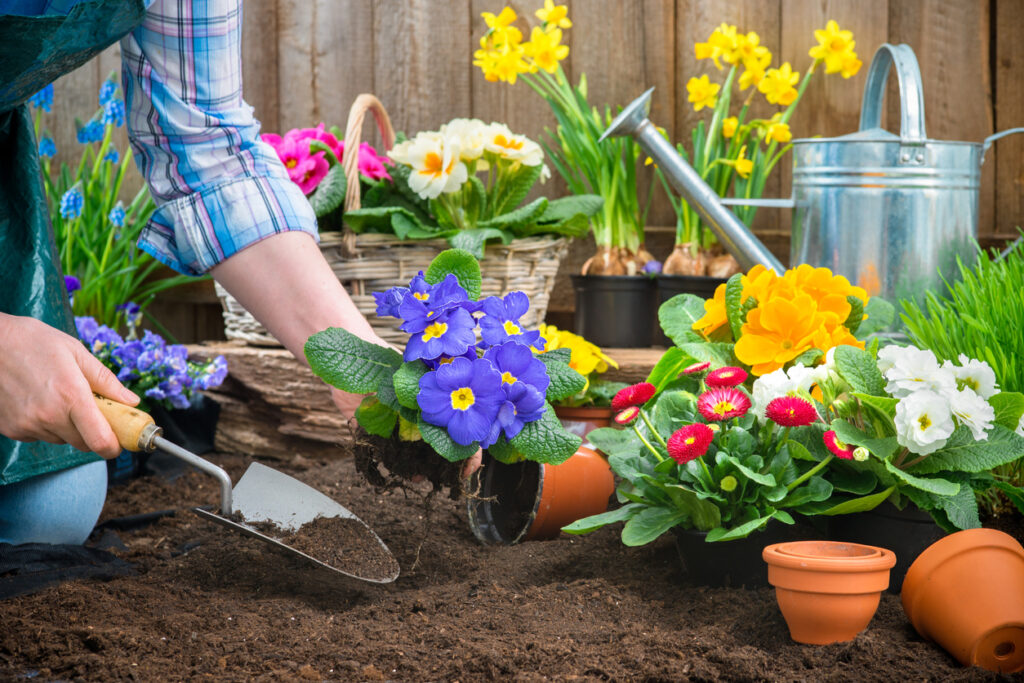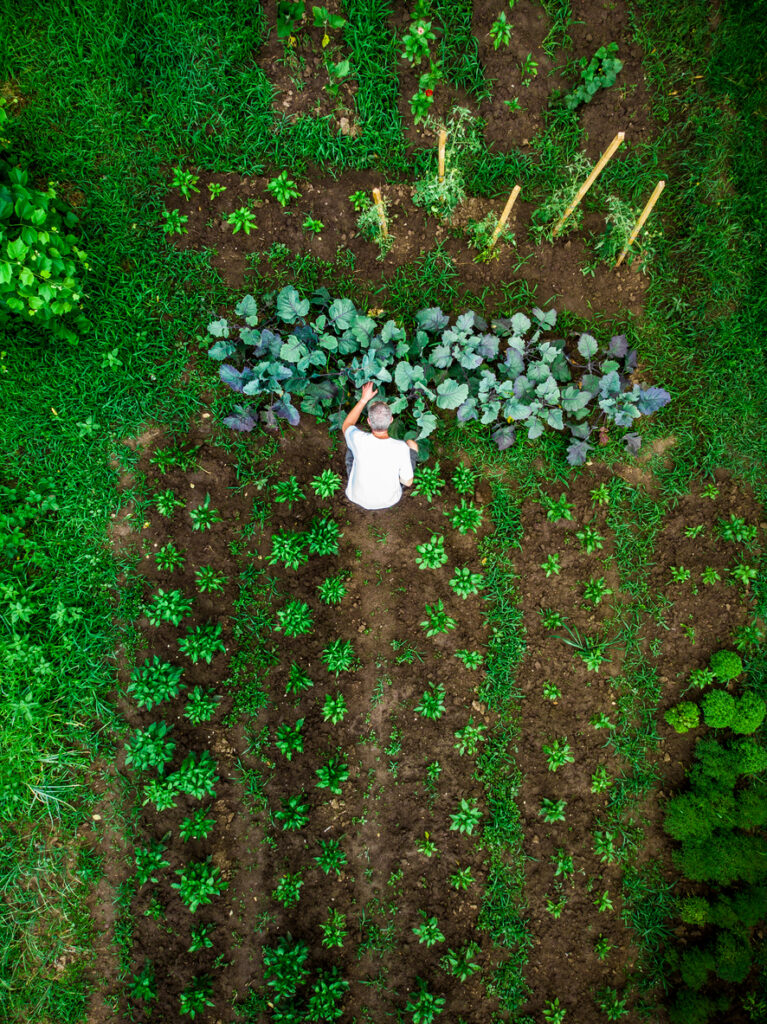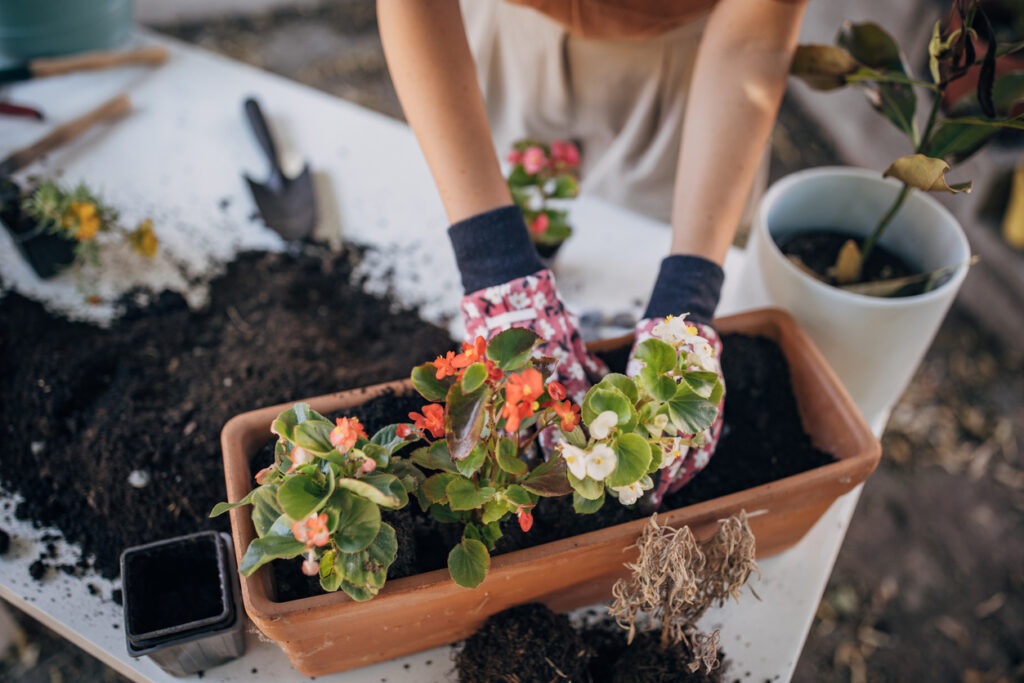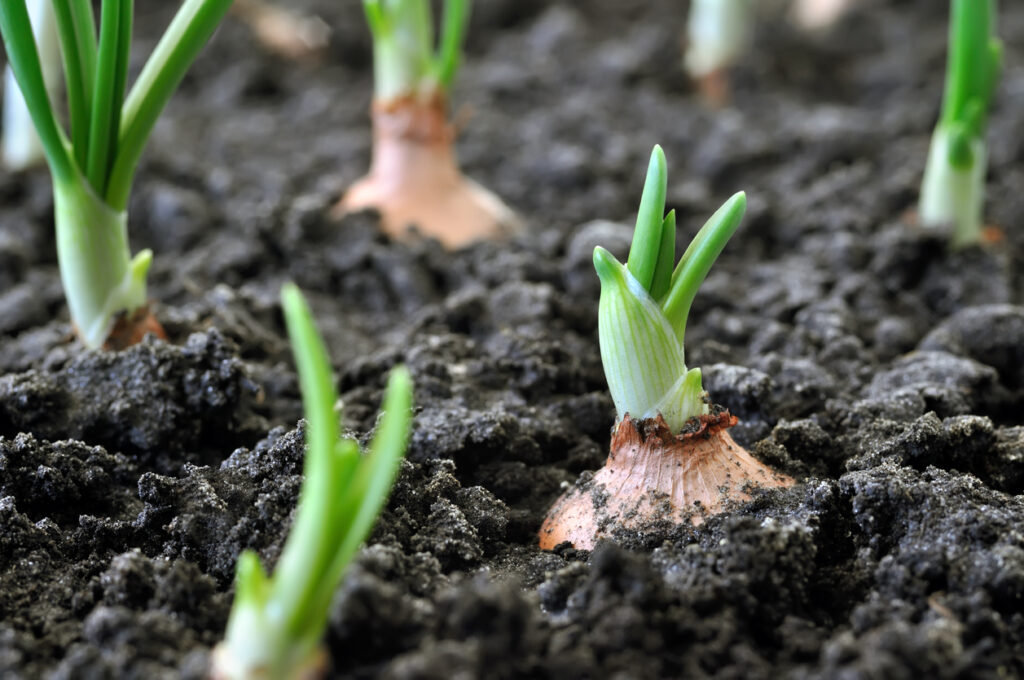
With the arrival of spring and the anticipated celebration of National Gardening Day on April 14th, we decided to roll our sleeves up, grab a shovel, and put our gardening skills to the test. Ok, maybe we aren’t building a garden, but we are here to encourage you to get your hands dirty and make gardening a new hobby you will GROW to love, no pun intended!
Before we take you through a step-by-step guide on how to create a garden, let’s talk about the health benefits of growing those juicy tomatoes!
What was once a critical way to survive, gardening made its way into the backyards of the many lives impacted by COVID-19. With more time at home, and a desire to connect with nature, gardening not only empowered people to provide their own food, but it was also a form of stress relief. In a recent study, light gardening was proven to promote brain nerve growth among senior individuals!
An activity that people of all ages can enjoy, gardening can be your next favorite pastime!
Idaho Planting Regions
Diverse in climate, learning about the planting zones in Idaho will help you build and maintain a healthy and vibrant garden. What grows successfully in one part of the state may not thrive in another. Let’s break down the common climates.
The northern and western regions are typically humid and cloudy and produce wet winters..
The eastern and southern parts of the state are usually a semi-arid climate with dry and cold winters.
Summers will range from warm to hot across the state; however, frost-free periods will vary in each region. Familiarize yourself with the first and last frost dates specific to your area.
Aside from the varying climates, Idaho is also known for its unpredictable weather. It may be necessary to have an elevated or protected garden, depending on your area!
Build Your Garden

“To plant a garden is to believe in tomorrow.” -Audrey Hepburn
Choose a location: Select an area that receives adequate sunlight; most vegetables need 6-12 hours of sunlight. Make sure the location has good drainage and is relatively flat. Consider the size of the garden you want to build and its proximity to your home and water source.
Plan the layout: Sketch out the dimensions and design of your garden on paper, including the type and location of plants, any paths or walkways, and any structures or garden features you want to include.
Consider the size: Beginning gardeners should start with a small gardening spot, roughly 10 x 10, accommodating a few different vegetables.
A 30 x 30 garden will feed a family of four and is good for canning, dehydrating, and freezing.
Prepare the soil: Clear the area of any grass, weeds, rocks, or other debris. Loosen the soil with a garden fork or tiller and amend it with organic matter like compost, manure, or peat moss.
Choose your plants and seeds: Select fruits, vegetables, and flowers appropriate for your specific regional Idaho climate, soil type, and sunlight your garden receives. Consider factors like color, texture, fragrance, and seasonality.
Plant your garden: Follow the planting instructions for each plant, including how deep to plant it and how far apart to space it from other plants. Consider choosing companion plants; two plants grown near each other for the benefit of one of those plants or both–so the benefit can be one way or mutual. Examples of companion plants: carrots and cabbage, or peas and peppers.
Mulch the garden: Apply a layer of mulch around the base of each plant to help retain moisture, prevent weeds, and regulate soil temperature.
Maintain the garden: Water your garden regularly, remove any weeds or dead plants, and fertilize your plants as needed. Make sure to monitor for pests and diseases.
Gardening in Pots

If you have limited space or poor soil quality, gardening in pots or containers is a great way to grow plants and bring life inside your space!
Choose the right container: Select a pot or container that is the appropriate size for the plant you want to grow. Make sure it has drainage holes at the bottom to prevent waterlogging.
Choose the right soil: Use a high-quality potting mix designed for container gardening. This will provide the right balance of nutrients, moisture, and drainage.
Choose the right plants: Select plants that are suitable for container gardening and that match the growing conditions in your area. Some good choices for container gardening include herbs, cherry tomatoes, peppers, and small fruit trees.
Add fertilizer: Container-grown plants may require more frequent feeding than those grown in the ground. Consider using a slow-release or liquid fertilizer every 2-3 weeks during the growing season.
Water regularly: Container plants can dry out quickly, especially in hot weather. Water your plants regularly, but make sure not to overwater, as this can lead to root rot. The frequency of watering will depend on the size of the container, the plant, and the weather conditions.
Provide adequate light: Most potted plants require at least 6 hours of sunlight per day. If your container garden is located in a shaded area, choose plants that can tolerate low light conditions.
Prune and harvest regularly: Regular pruning and harvesting will help to keep your plants healthy and encourage more growth.
Perennials vs. Annuals

Growing a successful garden includes understanding the lifespan of a plant.
Perennial vegetables are plants that live for more than two years and produce edible parts that can be harvested repeatedly over several years. Perennial vegetables have a longer lifespan and can provide a sustained yield of edible parts, such as leaves, stems, roots, or bulbs. Examples of perennial vegetables include asparagus, rhubarb, artichokes, and a wide variety of perennial herbs. Perennials are often favored because they require less maintenance and effort than annual vegetables.
Annual vegetables are plants that complete their lifecycle in a single growing season, usually within one year. They grow from seed, produce fruits or vegetables, and die off. Examples of annual vegetables include tomatoes, peppers, cucumbers, beans, and many leafy greens like lettuce and spinach. Annual vegetables are a popular choice for home gardeners because they tend to produce kan abundant amount of fresh produce in a short period of time. They require regular planting and tending each year, as they don’t come back on their own like perennial vegetables.
Gardening is a wonderful way to ground yourself, connect with nature, and experience the joy of watching something you nurtured, flourish and grow! Whether you are a beginner or an experienced gardener, Happy National Gardening Day!
“When gardeners garden, it is not just the plants that grow, but the gardeners themselves.” -Ken Druse


